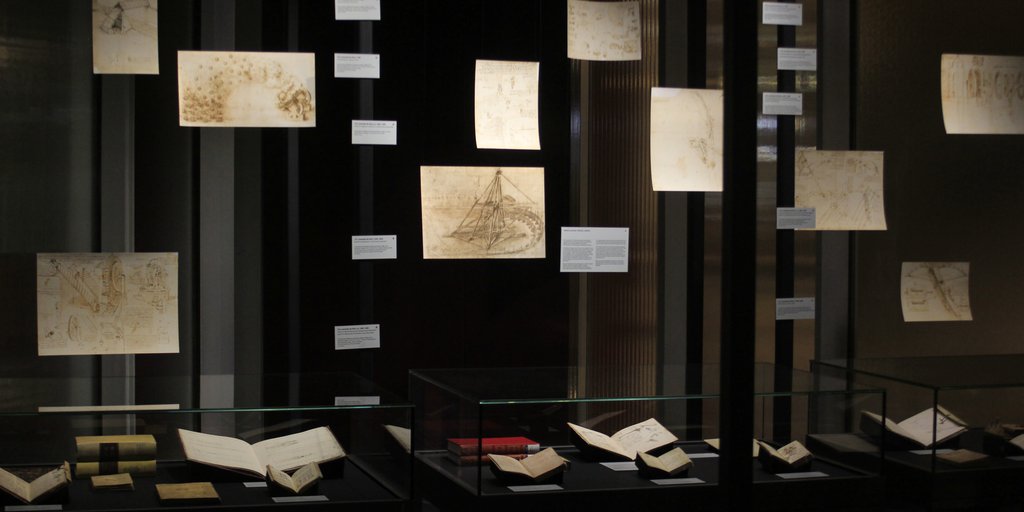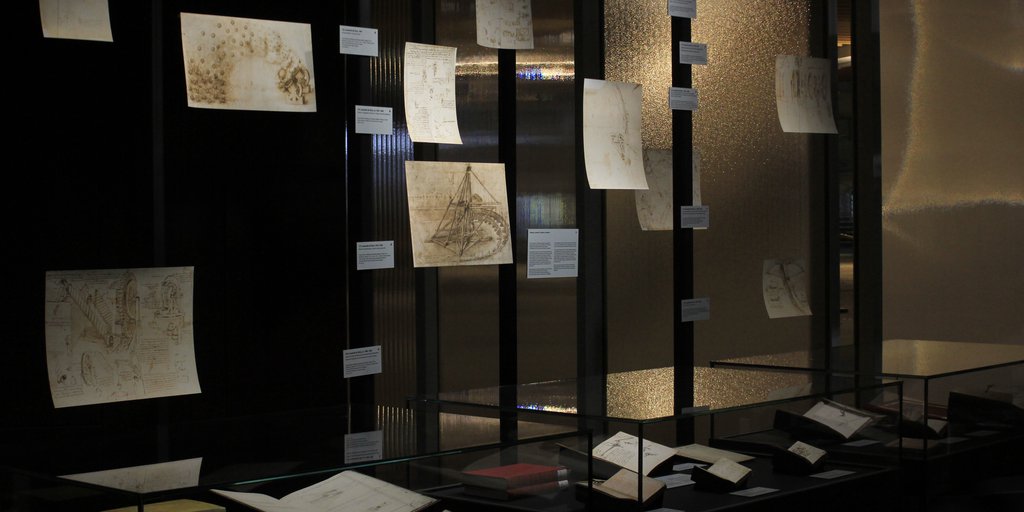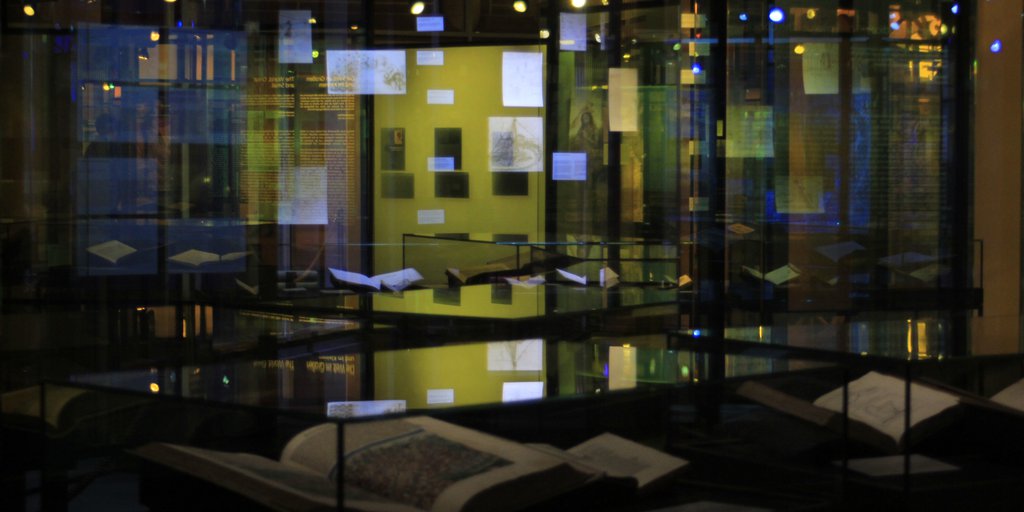
Epilogue: The Codices <
This is a collection without order, compiled from many papers that I have copied here,
hoping to put them in their respective order, according to the subjects they address …
Leonardo da Vinci
Codex Arundel, fol. 1r. Translation: Elizabeth Hughes
Leonardo’s surviving literary estate comprises over 4,000 sheets; a total of 22 volumes of illustrated manuscripts, generally known as codices, still exists today. The material is extremely heterogenous. Alongside pocket-sized sketchbooks with jottings made on the spot purely for his own use, there are large-format clean copies that seem to address an audience. What the volumes have in common is their thematic diversity, and all show traces of continual use and revision. At his death, Leonardo left the volumes to his collaborator and heir Francesco Melzi (1491/92–1567). Melzi’s heirs sold a large part of this legacy to the sculptor Pompeo Leoni (ca. 1533–1608). In 1637 the collector Galeazzo Arconati (before 1592–1649) donated several of these manuscripts to the Biblioteca Ambrosiana in Milan. They ultimately reached Paris as part of Napoleon’s spoils of war where most of them are still kept today—fortunately mostly in their original binding. Other codices took entirely different paths—though under similarly dramatic circumstances.
Codices <
 | 108.
Vocabulary ca. 1487–1490 |

A large part of the Codex Trivulzianus, one of Leonardo’s earliest notebooks, is filled with pages and pages with lists of words (over 8,000 terms), often arranged in several columns. The goal of this diligent exercise was to compensate for the deficiencies of his native vernacular Tuscan dialect by cultivating a written language which, as Cristoforo Landino had advised in the introduction to his Dante commentary (21 ■), should be enriched by as many Latin loan words as possible. The sources Leonardo used, aside from poetic works and specialist technical literature, included exemplary, alphabetically arranged thesauruses like the Vocabolista by the Florentine poet Luigi Pulci (1432–1484). From this, Leonardo copied terms and their meaning, from “ameno” (pleasant/agreeable) to “diafano” (transparent), to fol. 13v (shown here, from right to left).
References
Bambach, Carmen C. 2019. Leonardo da Vinci Rediscovered. Vol. 2: The Maturing of a Genius 1485–1506. 4 vols. New Haven / London: Yale University Press, 88–91.
Fanini, Barbara. 2018. Le liste lessicali del codice Trivulziano di Leonardo da Vinci. Trascrizione e analisi linguistica. Filologia e ordinatori 34. Florence: Franco Cesati Editore.
Idem. 2019. “The Library of a ‘Man without Letters’.” In Leonardo and His Books. The Library of the Universal Genius. Exhibition catalogue Museo Galileo, Florence, 6.6.–22.9.2019, edited by Carlo Vecce. Florence: Giunti, 32–41.











